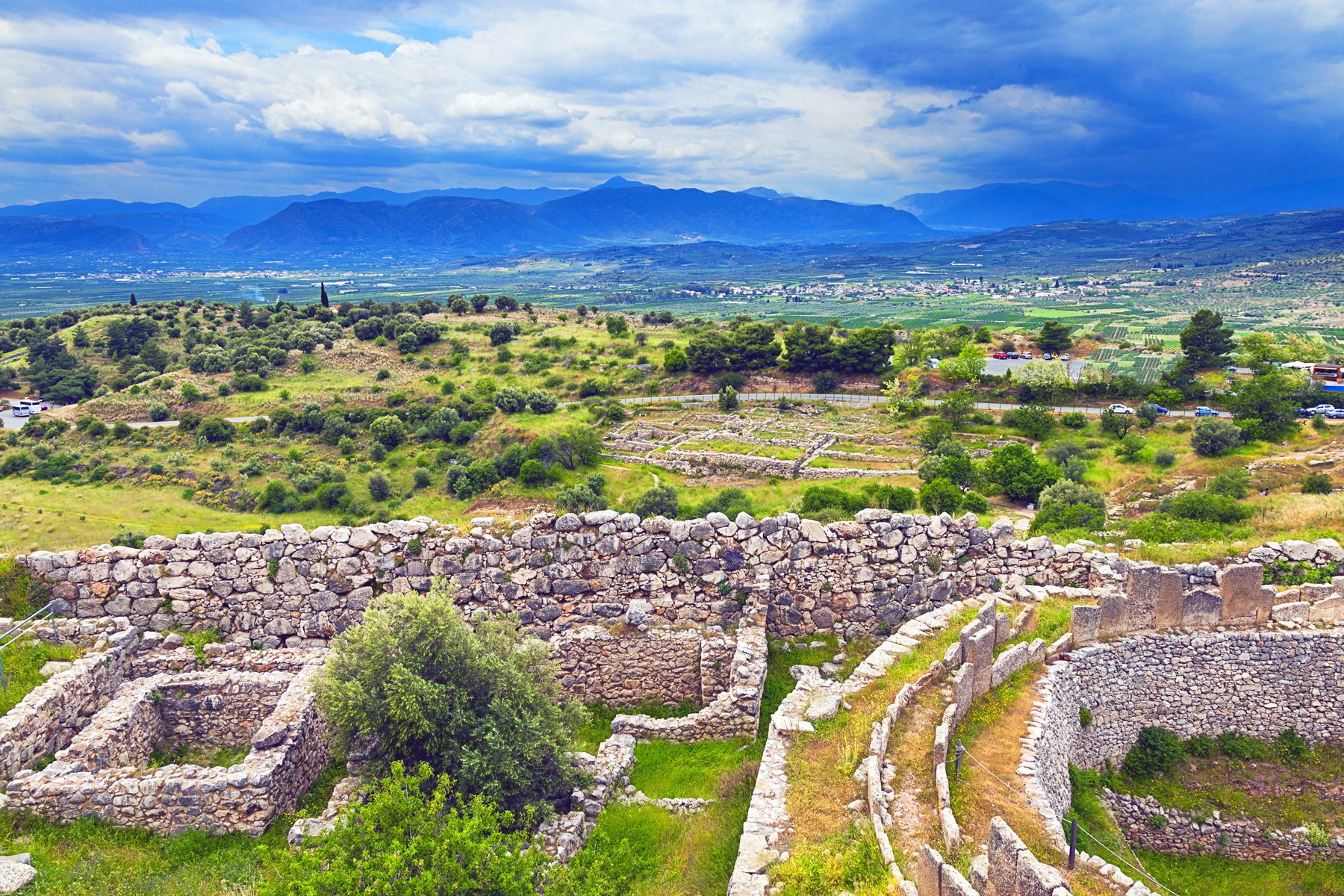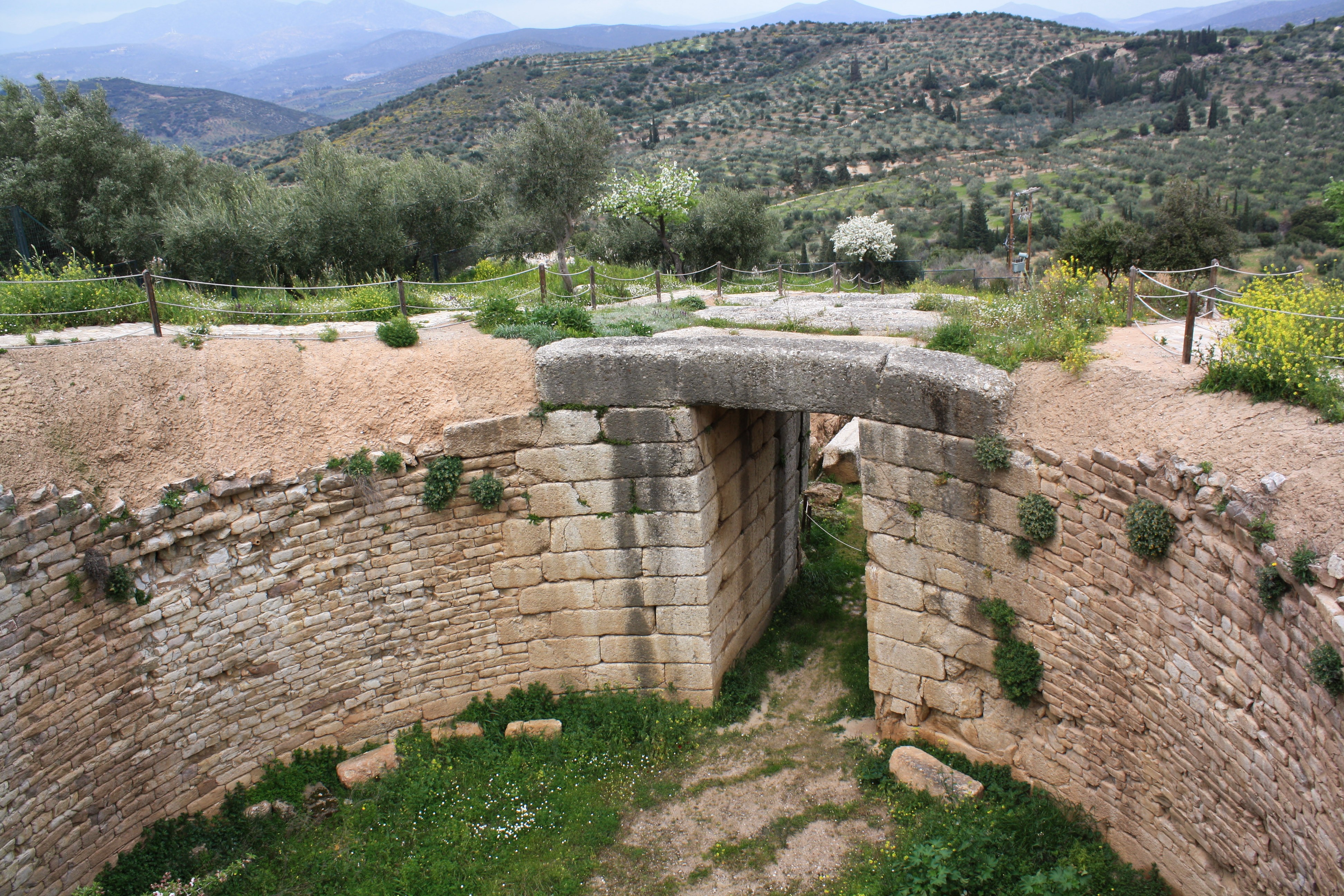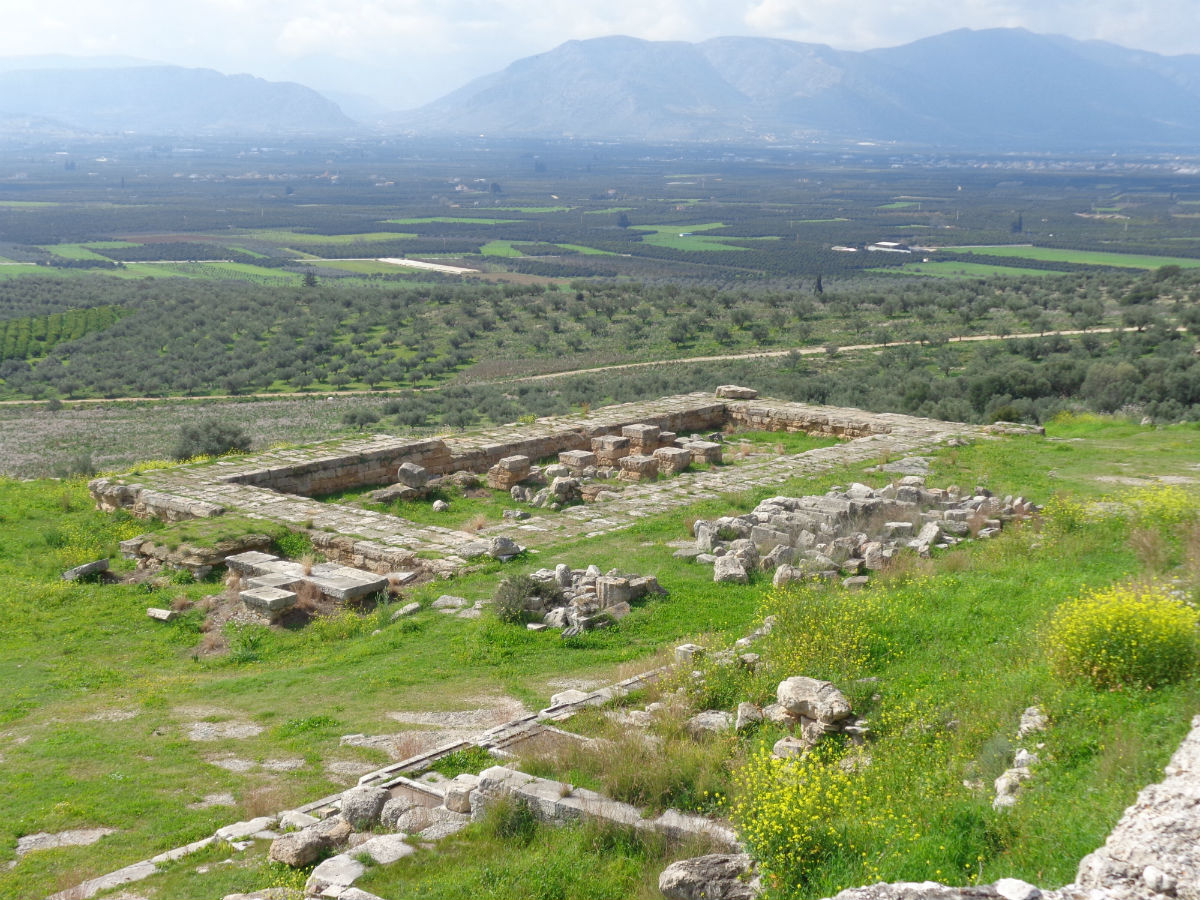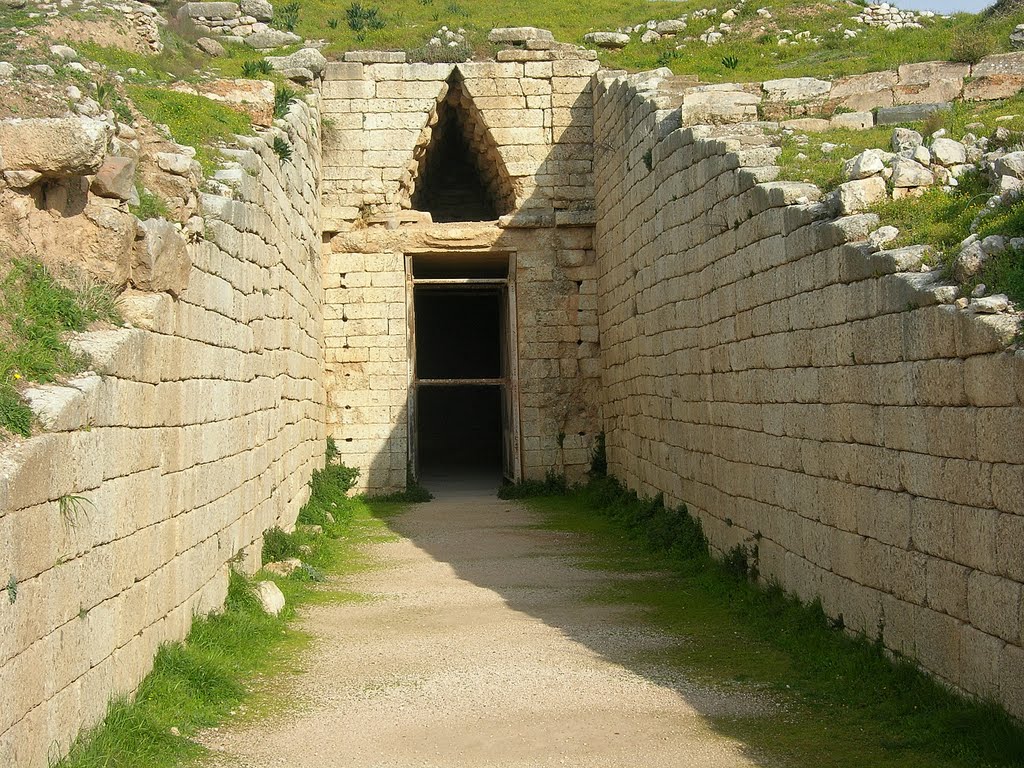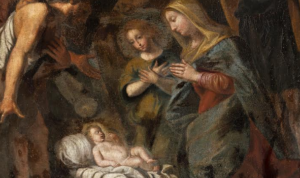Mycenae, one of the most important archaeological sites in Greece, is located about 90 km southwest of Athens, in the north-eastern Peloponnese. The kingdom of mythical Agamemnon, first sung by Homer in his epics, gave its name to one of the greatest civilizations of Greek prehistory – the Mycenaean civilization, famous for its majestic architecture and imposing monuments.
The most important and richest palatial center of the Late Bronze Age in Greece, Mycenae has inspired poets and writers over many centuries. Built between two tall hills, on a low plateau overlooking the Argive plain, the centre’s strategic location allowed it to develop into a military stronghold which dominated much of Southern Greece.
The construction of the palace and fortification wall currently visible began c. 1350 BC. A new wall was erected to the west and south of the early one approximately one hundred years later, together with the Lion Gate, the citadel’s monumental entrance, and its bastion.
Included in the newly fortified area was the city’s religious center. The famous tholos tomb known as the ‘Treasure of Atreus’, with its gigantic lintels and tall beehive vault, was probably built during the same period.
Successive destructions and fires led to the site’s final abandonment c. 1100 BC. After the collapse of the palatial system the hill was sparsely inhabited until the Classical period. In the eighteenth and nineteenth centuries, the impressive Cyclopean walls of the Mycenaean acropolis attracted many travelers and some of them even looted the site, taking advantage of the indifference of the Turkish authorities.
The rich finds from the area, that include the golden mask of “Agamemnon” and other amazing artifacts, are hosted in the Archaeological Museum of Athens, while the modern village of Mycenae is 2 km away from the archaeological site.
Don’t miss
– The imposing Lions Gate, at the entrance of the Mycenaean citadel.
– The royal complex.
– The six royal tombs, in the 1st tomb ring
– The 2nd tomb ring, with the vaulted tombs, outside the citadel
– The Treasury of Atreus or Tomb of Agamemnon, an impressive “tholos” tomb on the Panagitsa Hill
– The Heraion of Argos.
Ask me anything
Explore related questions
